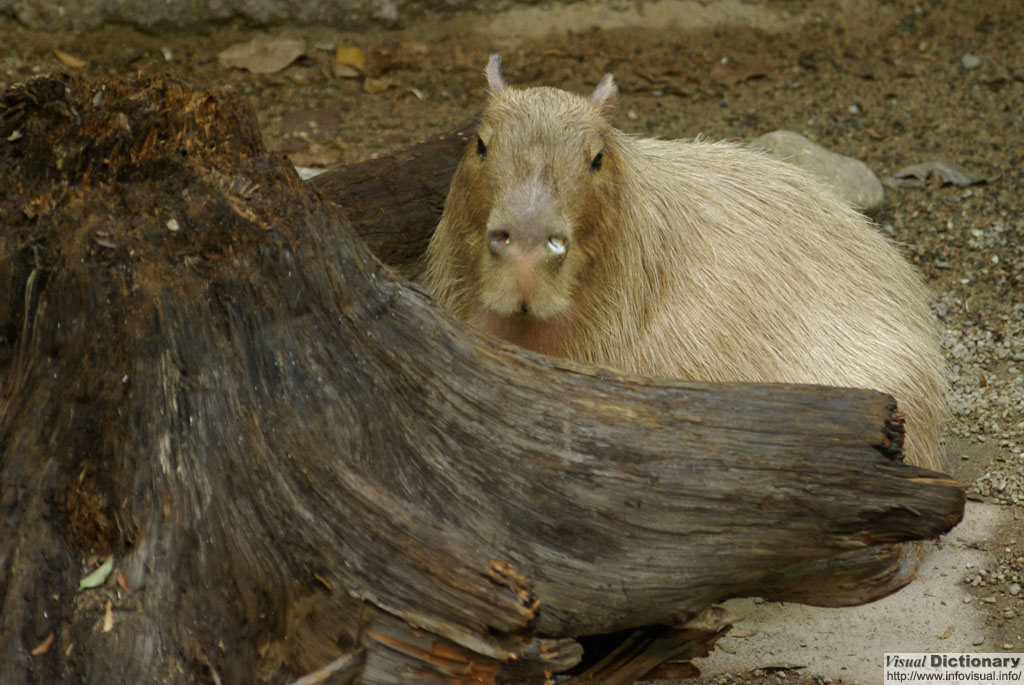Photo
Capybara

The capybara is a semi-aquatic herbivorous animal. It is the world's largest living rodent. Capybaras are gentle and will usually allow humans to pet and hand-feed them. Capybara skin is tough, and thus in some areas where capybaras are wild, they are hunted for meat and their skin, which is turned into a high-quality leather, while some ranchers hunt them for fear of the competition for grazing. The meat is said to both look and taste like pork. The Capybara meat is dried and salted, then shredded and seasoned. Considered a delicacy, it is often served with rice and plantains. Capybara are semi-aquatic mammals found wild in much of South America (including Panama, Colombia, Ecuador, Bolivia, Venezuela, Brazil, Argentina, French Guyana, Uruguay, Peru, and Paraguay) in densely forested areas near bodies of water, such as lakes, rivers, swamps, ponds and marshes, such as flooded savannah and along rivers in tropical forest. They roam in home ranges of 25–50 acres (10–20 ha).
Capybara is an herbivore (more specifically, a graminivore), grazing mainly on grasses and aquatic plants, as well as fruits and tree bark. An adult capybara will eat 6 to 8 pounds (2.7 to 3.6 kg) of grasses per day. Capybara's jaw hinge is non-perpendicular and they thus chew food by grinding back and forth rather than side-to-side. Capybaras are coprophagous, meaning they eat their own feces as a source of bacterial gut flora and in order to help digest the cellulose in the grass that forms their normal diet and extract the maximum protein from their food. Additionally, they may regurgitate food to masticate the food again, similar to cud-chewing by a cow.
Capybaras are social animals, usually found in groups, between 10 and 30 (though larger groups of up to 100 sometimes can be formed), controlled by a dominant male, who will have a prominent scent gland on his nose used for smearing his scent on the grasses in his territory. They communicate through a combination of scent and sound, being very vocal animals with purrs and alarm barks, whistles and clicks, squeals and grunts. Capybaras are excellent swimmers and can survive completely underwater for up to five minutes, an ability they will use to evade predators. If necessary, a Capybara can sleep underwater, keeping its nose just at the waterline. During midday, as temperatures increase, Capybaras wallow in water to keep cool and then graze in late afternoons and early evenings. They sleep little, usually dozing off and on throughout the day and grazing into and through the night.